#also book is so good at comedy he would be perfect as a merman trying to figure out how to be human
Explore tagged Tumblr posts
Text
the real question is: when will GMMTV see the vision and finally give me the forcebook + jossgawin mermen BL of my dreams
#LOOK ME IN THE EYES AND TELL ME FORCEBOOK AREN'T SO PRINCE ERIC AND ARIEL CODED#also book is so good at comedy he would be perfect as a merman trying to figure out how to be human#jossgawin would be there as a treat to me specifically#wishlist#forcebook#jossgawin#m: txt
24 notes
·
View notes
Text
FINALLY finished Emily Windsnap and the Land of the Midnight Sun! It was SO GOOD!!! After the first 3 books in the series, I’d honestly rank this one as one of the best. This had all the things I loved from Book 1! Beautiful vivid imagery, building tension, perfectly timed comedy to break that tension, romance, and more. So many firsts in this story...
*WARNING: SPOILERS*
Emily’s parents not part of this story for once. Honestly after everything they’d endured in the past 4 books, they deserve a break.
Political espionage.
Bad people staying bad people. Sadly not everyone can be redeemed.
Merpeople no longer having to hide themselves from humans. At least in Brightport.
Teenage relationships. Not just romance but actual relationships, both the fun side and messy side of them. Perfect follow-up to Books 3 and 4 which depicted Emily’s parents trying to navigate the ups and downs of maintaining a relationship
Friendly animals. Not trying to kill anyone this time, like the Kraken.
Neptune and Emily actually working together! As equals! Eventually. First the first time she’s unafraid of his wrath, and for the first time he doesn’t talk down to her. Neptune’s character development is one of the best things about this book, showing a much softer side to him. Turns out he’s also an animal lover.
Emily trusting Mr. Beeston! I know she was just starting to get there during Book 4, but this is the first time she actually thanks him and feels safe around. Now THAT is character development. This is what makes Mr. Beeston honestly one of my favorite characters, for this massive redemption arc which seems properly concluded after 5 books.
We actually SEE Mary Penelope’s past, not just hear about it this time like in the prior books. I swear when Mary and Millie were plotting to rescue Jake, I couldn’t help but imagine this scene from The Little Mermaid. Also this means Mary definitely told Millie about Jake, which raises so many questions -- did Millie know that Jake is a merman? What exactly did Mary tell Millie about Jake? Did Millie ever meet Jake? Would Jake have hidden his tail from her like he first did with Mary? Did Mr. Beeston then have to M-drug Millie too along with Mary? Did Beeston know that Millie knows about Jake? Did Millie just play dumb like Hamlet with Mr. Beeston for all those 12 years?
There’s also recurring themes from the first book. Again people lose then regain their memories. Again Emily has to convince stubborn people to not trust a certain person.
Also...FUCK Frozen 2 (2019) for clearly ripping off this book!!! I already had mixed feelings about that movie. I KNEW there was just something about it bothering me. But finishing this earlier, similar, and much better story, further cemented my dislike for the movie. Seriously it premiered 6 years after this book, there’s no way I could write off all the similarities as just coincidence.
6 Emily Windsnap books down, 3 more to go!

#emily windsnap and the land of the midnight sun#emily windsnap#middle grade fiction#middle grade books#review#mermaid#disney#frozen 2#disney frozen 2
3 notes
·
View notes
Text
LUCY on MERV
1971-1986

Mervyn Edward Griffin Jr. (1925 – 2007) was an American television host and media mogul. He began his career as a radio and big band singer who went on to appear in film and on Broadway. From 1965 to 1986, Griffin hosted his own talk show, “The Merv Griffin Show.” He also created the internationally popular game shows “Jeopardy!” and “Wheel of Fortune” through his television production companies, Merv Griffin Enterprises and Merv Griffin Entertainment. Both game shows are still airing as of this writing.
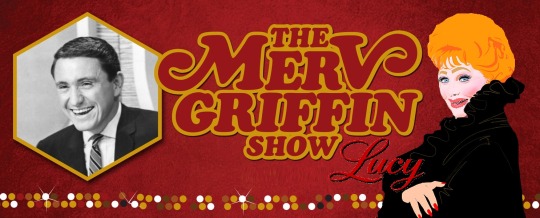
“The Merv Griffin Show” ran from October 1962 to March 1963 on NBC; May 1965 to August 1969 in first-run syndication; from 1969 to 1972 late night weeknights on CBS; and again in first-run syndication from 1972 to 1986. The show's longtime bandleader was Mort Lindsey. Griffin frequently clowned and sang novelty songs with trumpeter Jack Sheldon. Griffin's conversational style created the perfect atmosphere for conducting intelligent interviews that could be serious with some and light-hearted with others. Rather than interview a guest for a cursory 5- or 6-minute segment, Merv preferred lengthy, in-depth discussions with many stretching out past 30 minutes. In addition, Griffin sometimes dedicated an entire show to a single person or topic, allowing for greater exploration of his guests’ personality and thoughts. More than 25,000 guests appeared on “The Merv Griffin Show” including numerous significant cultural, political, social and musical icons including four U.S. Presidents. From 1974 to 1986 the show won twelve daytime Emmy Awards.

“The Merv Griffin Show: A Salute To George Marshall” ~ July 29, 1971
Guests: Lucille Ball, George Marshall, Edgar Buchanan, Glenn Ford, William Holden, Mort Lindsay & His Orchestra
Director George Marshall worked with Lucille Ball on Fancy Pants (1950), Valley of the Sun (1942) and 11 1969 episodes of “Here’s Lucy,” mostly location shoots.
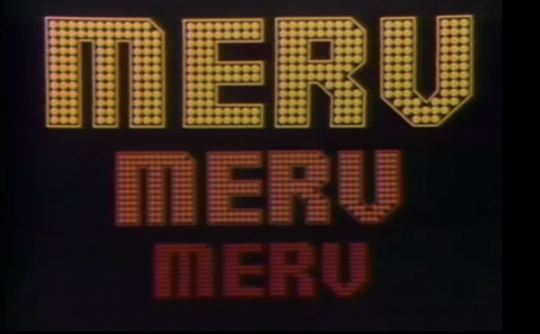
“The Merv Griffin Show” ~ October 12, 1973
Guests: Lucille Ball, Gary Morton, Desi Arnaz Jr., Lucie Arnaz, Gale Gordon, Robert Lewin, Ronald Reagan (recorded voice message)

A Salute to Lucille Ball featuring her husband and children, and her two most famous co-stars. Ronald Reagan, then Governor of California, calls in.
Lucy says she has finished Mame which won't be released for six months. Merv says the buzz is that the film is one of the best musicals in history. Lucy refutes the rumor that Lisa Kirk dubbed her singing voice. As for dancing, Lucy credits choreographer Ona White with getting her in shape after breaking her leg. Lucy says she wore eight to ten wigs in the picture.
Ball says she usually refers to the ‘Lucy’ character in the the third person.
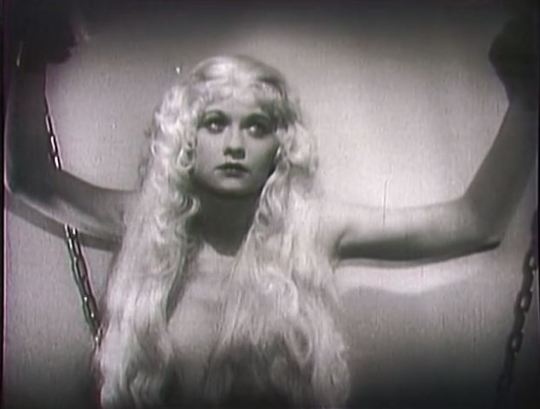
Lucy says the Goldwyn Girls never wore costumes, only wigs [a slight embellishment]. She mentions Eddie Cantor and Roman Scandals (1933, above).
Merv: “Did a man one day say 'Make her a star?'” Lucy: “No, he said 'make her.'”

Lucy references the “Here's Lucy” episode in which Lucie Arnaz imitates Cher: “The Carters Meet Frankie Avalon” (HL S6;E11) aired a month after this interview, on November 19, 1973.
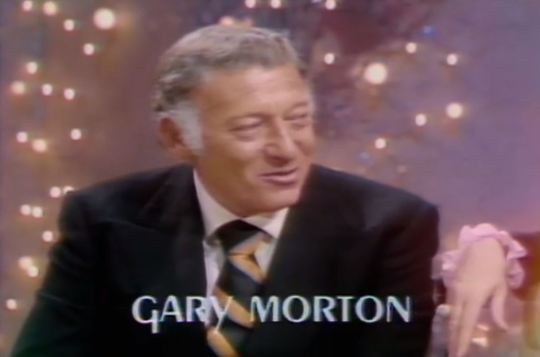
Lucy says that she met Gary Morton while doing Wildcat on Broadway. She says that she wasn't feeling at her best at the time and had taken on too much. Merv says he knew Gary Morton before Lucy did. Morton jokes that Merv had one voice for speaking and another for singing; the ‘Jim Nabors’ of his time.
Lucy: “The one thing I'm very proud of is that I know my craft.”
Lucy says that her daughter is the more successfully independent. She says her son is independent, but not sure how successful it is.

They talk about their neighbor, Jimmy Stewart and how he walks his big dogs around the block. Lucy says that Jimmy and Gloria Stewart have a huge vegetable garden. A Romanian neighbor did not recognize Stewart and turned him away when he came to the door trying to give away some of their surplus crops.
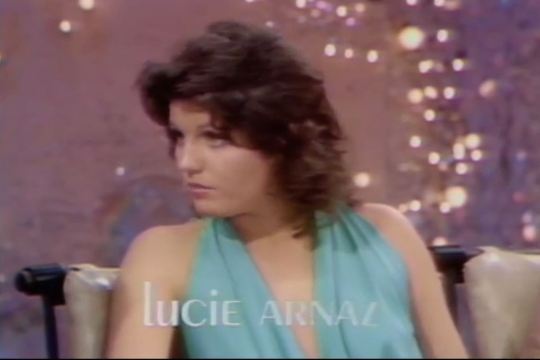
Lucie and Desi Arnaz Jr. join the conversation. Lucie says that she sees her mother frequently because they work together. Desi and Merv talk about tennis, a sport they both played avidly. Once again, Desi says that he did not play Little Ricky on “I Love Lucy,” although they were born on the same day.
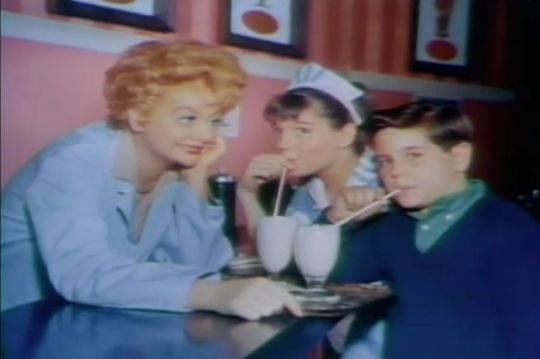
Lucie recalls her first appearance on her mother's show: as Cynthia on “The Lucy Show.” Merv puts up the now familiar (but colorized as the original was in black and white) publicity photo of Lucy and her children taken during “Lucy is a Soda Jerk” (TLS S1;E23) when Lucie was eleven years old. Although this is her first ‘named’ character in the series, Lucie was an extra in “Lucy is a Referee” (TLS S1;E3) in 1962.
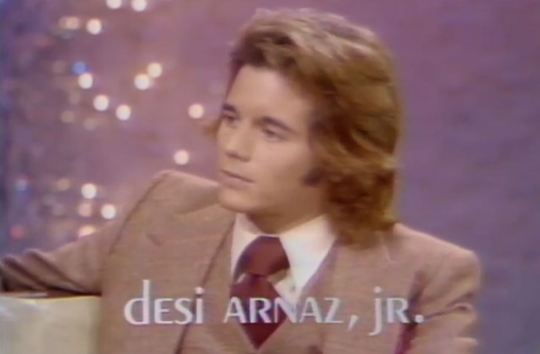
Desi Jr. says that he left “Here's Lucy” during season three in order to do a film, but by the time the shooting was over, his contract had expired and he decided to move on to do other things. Desi Jr. went to college for a short period of time - a week and a half.
Lucie: “I think I've been to the best dramatic school by just being on her [Lucy's] show for six years.”
Gary Morton tells how he and Lucy flew to Warrensburg, Ohio, to see Lucie do a summer stock production of Once Upon a Mattress. He then talks about how proud he is of Desi Jr.'s performance as Marco Polo in the film Marco (1973).The film wasn't actually released until two months after this interview. Lucy hosted a home screening of the film.
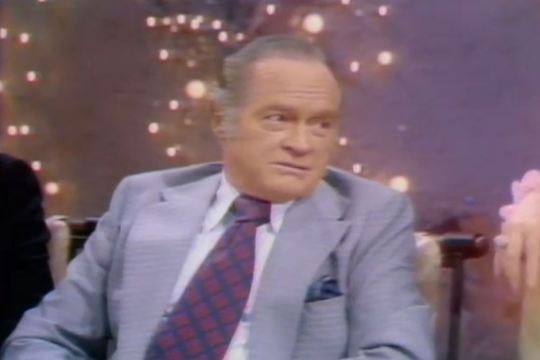
Merv welcomes a surprise guest, Bob Hope. They talk about Bob Hope's house, which was under construction in Palm Springs when it was engulfed by fire, allegedly through arson. Joking, Gary Morton holds out a lit cigarette lighter!
Hope mentions the four films he did with Lucy, even the one they consider the least memorable, Critic's Choice (1963). Lucy calls it a flop. During the filming of The Facts of Life, Lucy was always asking Hope if she had successfully shed the 'Lucy' character. Bob tells the story (which he has told before) of when a Desilu stockholder interrupted the filming with her super 8 camera.
Hope: (about Lucy’s reruns) “She's on so much, you can just flip the dial and see her raise her children.”
Lucy compliments her writers, Bob (Carroll) and Madelyn (Davis).
Hope jokingly says they shouldn't talk about his political affiliations with Washington because he's having enough trouble with his taxes as it is. Lucie says that the President [Richard Nixon] is having trouble with his, too! In late 1973, Nixon was in the headlines for mistakes on his tax returns.
Merv runs the first clip of Mame, despite it not being completely finished in post-production. Lucy says it will be released at Easter. Even Lucy hasn't seen it! [The MPI DVD version of this interview does not include the clip.]

After a commercial break, Merv introduces “Uncle Harry himself” Gale Gordon. Gordon says that he just adores Lucy, even after fifty years in the business. Lucy claims that Gordon is just as good at the table reading as at the final filming. He tells Merv that his mother Gloria Gordon played the landlady on “My Friend Irma” both in the 1949 film and the 1952 television series.

They talk about about Gale Gordon's on-set nickname, 'Old Soggy Crotch', because he was constantly getting wet during episodes of “Here's Lucy.” The show actually bleeps out the nickname because the word ‘crotch’ would not pass the censors! Merv puts up a still from “Lucy Makes A Few Extra Dollars” (HL S4;E6) which depicts Gordon covered with food!
Gary Morton relates that when Richard Burton and Elizabeth Taylor guest starred on the show, he complimented Gordon on his performance, and assumed that he must have been born in England. Although raised in England, Gordon was actually born in New York City. Lucy says he is now the mayor of Borrego Springs, California.

After a break, Merv introduces the President of the Academy of Television Arts and Sciences Robert Lewin, who presents Ball with a plaque of commemorating her 13 Emmy nominations since 1951. Lewin says the plaque has an 'extension' for her next 13!
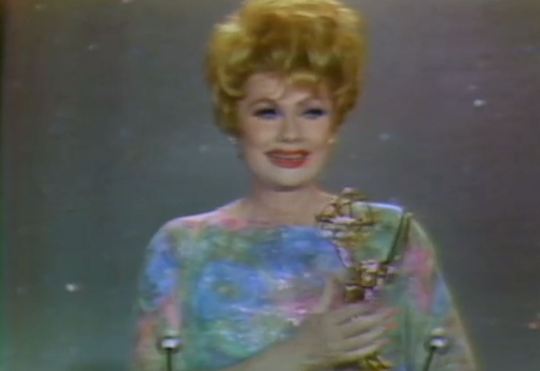
Merv shows a clip of Lucy accepting her Emmy for Best Actress. He claims it is 1967, which Lucy questions: “67? I didn't know I won one in 67.” Lucy is correct. The year was 1968.
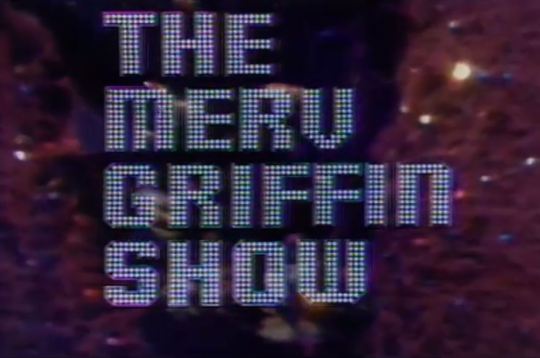
“The Merv Griffin Show” ~ April 9, 1974
Guests: Lucille Ball, Bea Arthur, Gene Saks, Gary Morton
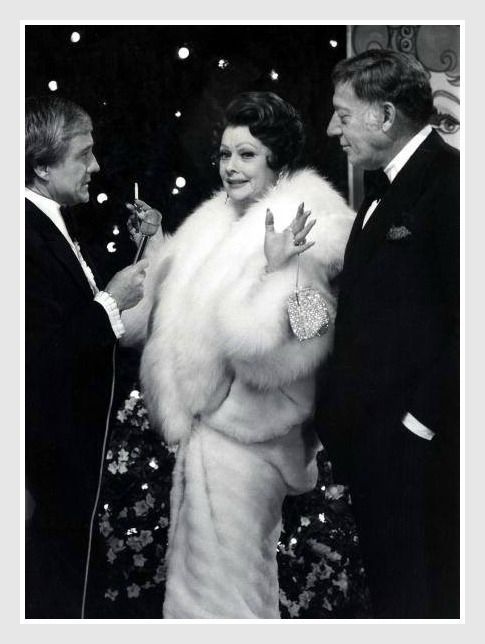
This show was taped on March 24, 1974, on location at the Hollywood premiere of Mame at the Cinerama Dome in Hollywood. Among those interviewed are Lucille Ball and husband Gary Morton; Beatrice Arthur and husband, director Gene Saks.
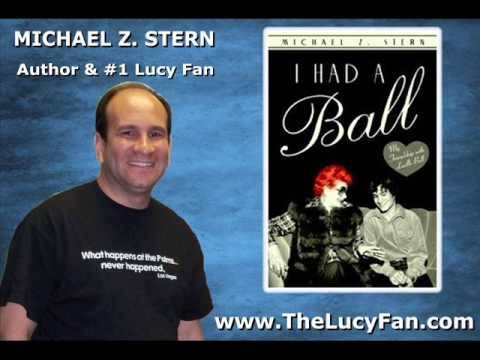
One of the many fans lining the red carpet for Merv's interview with Lucy was Michael Z. Stern. He later wrote about the experience in his book I Had a Ball: My Friendship With Lucille Ball. Stern recounts that he made a large sign that read “WE LOVE LUCY” which (along with his arm) made it onscreen on “The Merv Griffin Show.”
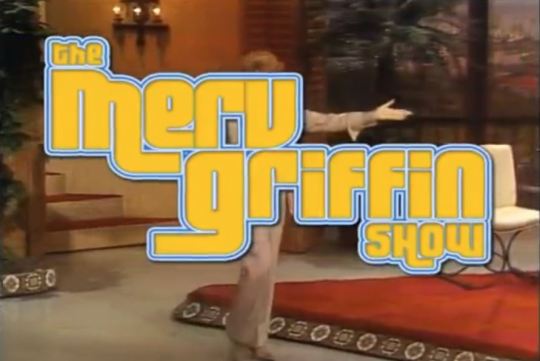
“The Merv Griffin Show” ~ February 4, 1980
Guests: Lucille Ball, James Brolin, Michele Lee, Natalie Wood
Lucy talks about teaching comedy seminars in college, although the grading confounded her as it was solely a question and answer seminar. Lucy points out someone named Stuart (although he doesn’t appear on camera), one of her former seminar students who is in the studio audience.
Lucy compliments Merv as one of the best 'listeners' of all talk show hosts.
Lucy stresses that she's not a funny person, but credits her daughter and Gary, her husband, with the attribute.
youtube
Merv begs Lucy to do the Lucy Ricardo “Waaaa” cry for him. Lucy is initially reluctant, but she does it for him.

Four days later, “Lucy Moves To NBC” was aired. Lucy's visit is likely to promote that event.
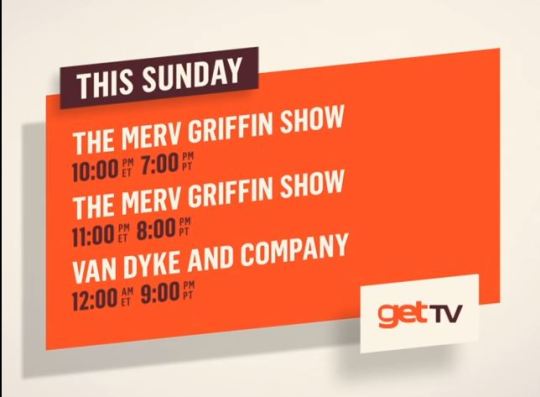
In 2017, Get TV celebrated Lucille Ball's birthday by airing this interview and the 1973 “Merv Griffin Show” interview of Lucy back to back, followed by a rare screening of Lucy's appearance on “Van Dyke & Company.”
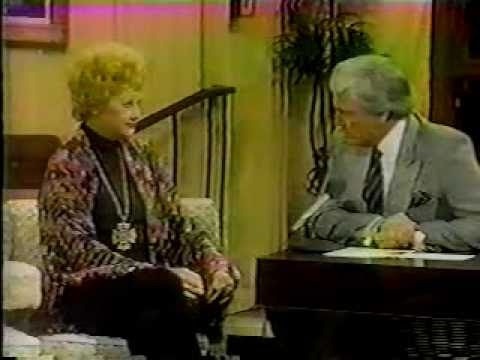
“The Merv Griffin Show” ~ June 24, 1982
Guests: Lucille Ball, Ethel Merman, Ginger Rogers
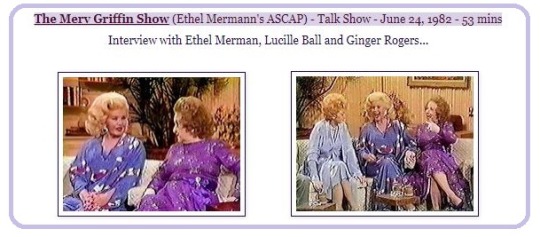
Lucy shares the stage with two powerhouse performers from her past. Merman guest-starred in two back-to-back episodes of “The Lucy Show” in 1964. Ball had done five films with Rogers during the 1930s. She guest-starred as herself on a 1971 episode of “Here's Lucy” (S4;E11).
TRIVIA
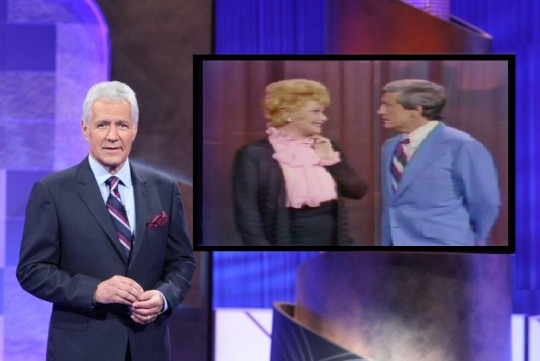
Lucille Ball is responsible for Alex Trebek hosting "Jeopardy"! Lucy was a fan of the short-lived game show "High Rollers" hosted by Trebek. When Merv Griffin was looking to reboot "Jeopardy" Lucy suggested he consider hiring Trebek and the rest is history!
#The Merv Griffin Show#Merv Griffin#Lucille Ball#Gary Morton#Lucie Arnaz#Desi Arnaz Jr.#TV#Talk Show#Lucy#Here's Lucy#The Lucy Show#Robert Lewin#Emmy Awards#Michael Z. Stern#Gale Gordon#Bob Hope#Ethel Merman#Ginger Rogers#Mame#alex trebek#Ronald Reagan#Roman Scandals#Jeopardy#Get TV
18 notes
·
View notes
Text
Her Own Story: A Nora Ephron Appreciation
This review was originally published on March 28, 2016 and is being republished for Women Writers Week.
Nora Ephron has been portrayed on screen by Diane Keaton, Sandra Dee, Meryl Streep, and Streep’s daughter, Grace Gummer. And that’s just the characters based on her life; her wit and insight are reflected in dozens of other characters she created as well.
Nora’s writer mother Phoebe taught her that “everything is copy.” Even as she was dying, she ordered Nora to take notes. All four Ephron daughters became writers, but Nora, named for the door-slamming heroine of Ibsen’s A Doll’s House, most of all mined her own life and those around her for material. She is best remembered as the writer and/or director of four of the most successful romantic comedies of all time: “When Harry Met Sally...” (1989), “Sleepless in Seattle” (1993), “You’ve Got Mail” (1998), and “Julie and Julia" (2009). The glossy charm of those films, and, let’s face it, their marginalization as “chick flicks,” makes it easy to overlook just how smart they are. For decades, no other romantic comedies have come close in quality or influence, despite the best efforts of various adorkable Jessicas and Jennifers confronting cutely contrived misunderstandings with Judy Greer as the quirky best friend.
Nora was the oldest daughter of screenwriters Henry and Phoebe Ephron (their story is told in Henry’s memoir, We Thought We Could Do Anything). They were New York City playwrights lured west to adapt established works like “Carousel” and “Daddy Long Legs” for Hollywood. Their four daughters grew up in Beverly Hills while the Ephrons worked on films like “Desk Set,” starring Spencer Tracy and Katharine Hepburn, “There’s No Business Like Show Business,” with Ethel Merman and Marilyn Monroe and “Captain Newman, M.D.,” with Gregory Peck and Tony Curtis. Phoebe wrote to Nora at camp describing the scene outside her office on the studio lot: a special effects crew creating the parting of the Red Sea for “The Ten Commandments,” using blue Jell-O.
The Ephrons often entertained their friends, mostly other New York writers, and Nora grew up listening to complicated, challenging, witty—sometimes relentlessly witty—people. She remembered Dorothy Parker playing word games at her parents’ parties. Nora dreamed of being the Parker-esque queen of a new Algonquin Roundtable: “The only lady at the table. The woman who made her living by her wit.”
The Ephrons did not hesitate to use each other's lives as material. Even Nora’s son, Jacob Bernstein, produced a superb documentary about his mother, which is of course titled "Everything is Copy." It tells the story of Nora’s sister Delia putting her head through the bannister rails in their house, so that the fire department had to come and get her out. The Ephrons made that into an incident in a James Stewart film they wrote called “The Jackpot.” “My parents just took it and recycled it, just like that,” Nora says in the film. Later, Nora’s letters home from college inspired her parents to write a successful play called “Take Her, She’s Mine,” which became a movie starring Sandra Dee as a free-spirited (for 1963) daughter and James Stewart as the lawyer father who tries to keep her out of trouble.
Phoebe and Henry were not the kind of parents who came to their children’s school events or comforted them reassuringly. Phoebe would respond to her daughters’ stories of heartbreak or disappointment by telling them it was all material for them to write about. She had a biting humor, sometimes at her daughters’ expense. But the Ephrons taught their daughters how to tell stories, especially their own stories.
After college, Nora went to New York to work as a “mail girl” for Time magazine. News magazines of that era did not allow women to write bylined articles; the most they could expect was to be researchers for the male journalists. The fictionalized but fact-based Amazon series “Good Girls Revolt” depicts the experiences of the women who fought this system, and it includes a character named Nora Ephron, played by Grace Gummer.
Nora was in the right time and place when two great upheavals came together in the 1970’s: the feminist movement and the arrival of “new journalism”—vital, opinionated, very personal writing that powered popular and influential magazines like Clay Felker’s New York Magazine. This was the perfect place for her distinctive, confiding voice. Her essays were deceptively self-deprecatory—her first collection was called Wallflower at the Orgy and one of her best-known pieces describes her insecurity about having small breasts. But Nora’s columns, especially the series about women collected in Crazy Salad and the series about media in Scribble Scribble, are fierce, confident, devastating takedowns of those she found pretentious, hypocritical, or smug, including her former boss at the New York Post and the President’s daughter, whom she described as “a chocolate-covered spider.”
By 1976, Nora had already divorced the first of her three writer husbands and it was around this time she fell in love with another media superstar, Watergate reporter Carl Bernstein. In “Everything is Copy,” he described the night they met: “We had this amazing conversation.” They got married and she moved to Washington.
When she was pregnant with their second child, she discovered he was unfaithful. She packed up and moved back to New York. As director Mike Nichols says in “Everything is Copy,” she cried for six months before taking her mother’s advice and writing a thinly disguised novel about it, the scathingly funny Heartburn. “In writing it funny, she won,” says Nichols, who then directed the 1986 movie version, starring Meryl Streep and Jack Nicholson. Streep called the book Nora’s “central act of resilience.”
“She wrote herself out of trouble,” says her agent, Bryan Lourd. That was economic trouble as well as heartache. Although she had never intended to become a screenwriter like her parents, she found that it provided more flexibility for a single mother than being a journalist. So she adapted Heartburn for the screen and co-wrote 1983's “Silkwood,” also starring Streep as the Kerr-McGee employee turned activist.
Those who dismiss Nora’s work as lightweight because it is often light-hearted overlook its singularly radical and unapologetically female point of view. The moment in "Everything is Copy" that best illuminates her significance as a filmmaker is when Streep recalls Nichols asking Nora to provide more perspective on the husband’s point of view. But Streep understood that “this is about the person who got hit by the bus. It’s not about the bus.” Nora was saying that we have already seen a lot of movies from the perspective of the man; this one is the woman’s story. Indeed, it is the ability to control the point of view that was most important to Nora as a writer and director. In the novel version of Heartburn, she anticipated and answered questions about why she would tell the world something so personal and humiliating.
Because if I tell the story, I control the version. Because if I tell the story, I can make you laugh, and I would rather have you laugh at me than feel sorry for me. Because if I tell the story, it doesn't hurt as much. Because if I tell the story, I can get on with it.
Nora loved the control of being a director and paid attention to the smallest of details. For “Sleepless in Seattle,” she had a door flown across country so that the characters who had not yet met would be literally opening the same door, sending the audience a subliminal signal about their rightness for each other. She said that directing a movie meant that all day people asked her to decide things—she found it very satisfying to give them answers.
"Everything is Copy" shows a Newsday headline for a story about Nora: “She tells the world things that maybe she shouldn’t, but aren’t you glad she did?” Nora was her own best copy, and it is a treat to see topics and opinions from her personal essays show up in her films. In "When Harry Met Sally...," Sally’s “high maintenance” style of ordering in a restaurant is based on Nora, and the sexual fantasy she confides to Harry as they walk through Central Park in autumn is one Nora discussed for its possible anti-feminist implications in Crazy Salad. In “Sleepless in Seattle,” Nora pays loving tribute to a movie she saw with her mother, “An Affair to Remember.” (After they saw the movie, Phoebe introduced Nora to its star, Cary Grant.) In “Julie and Julia,” the loving, devoted relationship between Julia Child and her husband Paul is based in part on Nora’s very happy third marriage.
One of Nora’s most underrated films is perhaps her most personal, 1992's “This Is My Life,” based on the book by Meg Wolitzer, with Julie Kavner as a single mother trying to make it as a stand-up comic. Lena Dunham told the New Yorker that this film, Nora's directorial debut, made her want to be a filmmaker.
On each viewing, a new joke or angle revealed itself to me and its world became richer. I loved Samantha Mathis’ surly teen, Gaby Hoffmann’s quippy innocent, and especially Julie Kavner’s Dot, their single mother, a standup comedian hellbent on self-actualizing despite, or maybe because of, these daughters. But what I really loved was the person orchestrating the whole thing. The costumes, perfectly low-rent polka-dotted blazers and grungy winter hats. The music, a mixture of vaudevillian bounce and Carly Simon’s voice that somehow made the city seem more real than if car horns scored the film. The camerawork, a single gliding shot that followed each family member into her bedroom as she settled into a new apartment in a less than desirable Manhattan neighborhood. I loved whoever was making these actresses comfortable enough to express the minutiae of being a human woman onscreen.
At first, the conflict in the story comes from the character’s struggles to support her children. But then, as she becomes successful, the conflicts are central to Nora both as Phoebe’s daughter and as her sons’ mother: How can a mother pursue her passion and talent, knowing she may neglect the needs of her children? And should her children’s confidences and problems be copy for her stand-up routine?
In one scene, Kavner’s character Dottie talks to her agent:
Dottie Ingels: I spend 16 years doing nothing but thinking about them and now I spend three months thinking about myself and I feel like I’ve murdered them. Arnold Moss: You had to travel. It’s part of your work. Kids are happy when their mother’s happy. Dottie Ingels: No they’re not. Everyone says that, but it’s not true. Kids are happy if you’re there. You give kids a choice: your mother in the next room on the verge of suicide versus your mother in Hawaii in ecstasy, they choose suicide in the next room. Believe me.
2000's “Hanging Up” is based on Delia Ephron’s 1995 book about her father’s death. Delia and Nora wrote the script, and Delia speaks frankly in "Everything is Copy" about the arguments they had while they were working together. The movie is a mess, of more interest for what it reveals about Ephron family dynamics than for its quality. The character based on Nora is played by Diane Keaton, who also directed. In his review, Roger Ebert wrote: “It is so blond and brittle, so pumped up with cheerful chatter and quality time, so relentless in the way it wants to be bright about sisterhood and death, that you want to stick a star on its forehead and send it home with a fever.” Tellingly, the Keaton/Nora character in the film is accused by her sister of appropriating her emotions for public display.
My favorite “everything is copy” example in Nora’s films is from her most overlooked movie, the very charming and funny “My Blue Heaven" (1990). It stars Steve Martin as a former mobster in the witness protection program and Rick Moranis as the FBI agent assigned to take care of him as he prepares to testify against the head of the crime syndicate. The single mom prosecutor played by Joan Cusack reflects some of Nora’s experiences. But it isn’t the Ephrons who are copy here. By this time, Nora was very happily married to her third husband, writer Nicholas Pileggi, whose book about former mobster Henry Hill was the basis for the brilliant Martin Scorsese crime drama “Goodfellas.” Clearly, as her husband was writing about Hill, Nora was thinking that putting a goodfella into witness protection could be a funny story.
Nora’s sons are now writers, too, both reporters, telling other people’s stories. But in writing about her death for the New York Times and telling Nora’s story in “Everything is Copy,” Jacob Bernstein tells his own as well. We see him talking to his father about the divorce and the many-year fight that followed, which included a negotiation for joint custody in exchange for allowing Nora to make the movie “Heartburn.” The agreement filed with the court even included a clause ensuring that Bernstein would be portrayed as a good father in the film, so the film did not just reflect her life; it was shaped by it. In "Everything is Copy," as Jacob mulls his grandmother’s famous phrase, and the private illness of his usually open-book mother, another generation of family writers expresses how their personal experiences can be illuminating for us, too.
from All Content https://ift.tt/2tM9i8f
0 notes